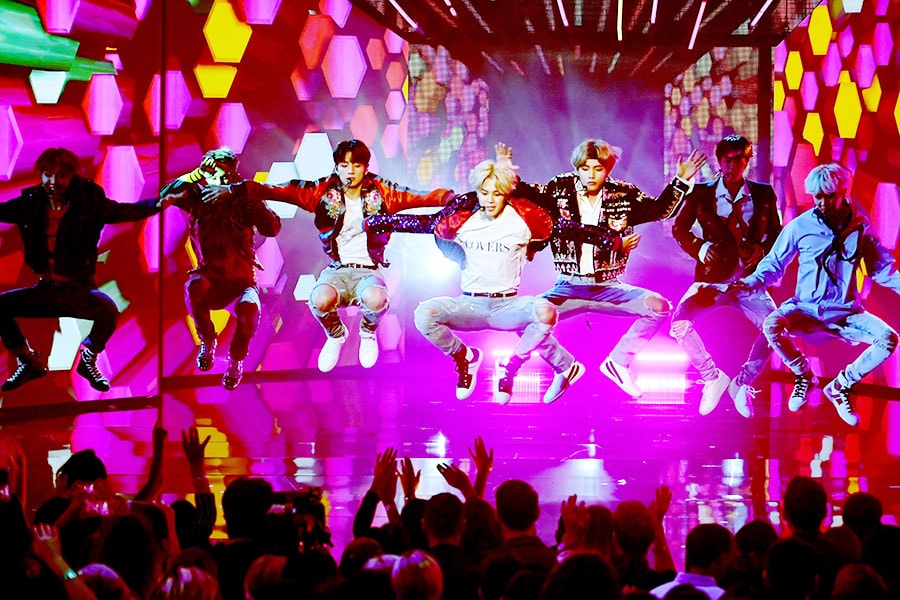
Building an 'ARMY' of fans: Marketing lessons from K-Pop sensation BTS
Few companies can boast a customer base as loyal and engaged as BTS fans. In a case study, Doug Chung shares what marketers can learn from the boyband's savvy use of social media and authentic connection with listeners
 In 2019, BTS joined The Beatles and The Monkees as the third band in 50 years with three albums at the top of the Billboard 200 chart in the same year
Image: Kevin Winter/Getty Images
In 2019, BTS joined The Beatles and The Monkees as the third band in 50 years with three albums at the top of the Billboard 200 chart in the same year
Image: Kevin Winter/Getty Images
What would it take to attract customers who are so loyal that they would not only buy your products, but would also lavish your distributors with flowers and purchase advertising to elevate your brand? Ask the minds behind K-pop sensation BTS.
Created by a Korean management company, BTS found itself improbably shattering records held by Justin Bieber and The Jackson 5, and amassing 100 million fans. In 2019, BTS joined The Beatles and The Monkees as the third band in 50 years with three albums at the top of the Billboard 200 chart in the same year.
In a recent case study, “BTS and ARMY,” Harvard Business School associate professor Doug Chung and research associate Kay Koo show how BTS marshalled its legions of devoted fans—known as the ARMY (Adorable Representative M.C. for Youth)—to champion the band on social media and send it to mega-stardom. The large, loyal following was a big part of what investors were buying when BTS’ management company raised $50 billion in its 2020 IPO, leading Chung and Koo to take a closer look at what business leaders can learn from the band’s effort to draw a large crowd of die-hards.
“They’re authentic and genuine,” Chung says. “They would directly communicate with the fan base. The effective use of social media was how they created an ecosystem.”
The band’s humble start
K-pop, or Korean popular music, emerged in the 1990s, the product of heavy government investment to create a unique cultural export. Music agencies built acts using an idol system that managed all aspects of stars’ lives and trained them in singing, dance, and even foreign languages.This article was provided with permission from Harvard Business School Working Knowledge.







